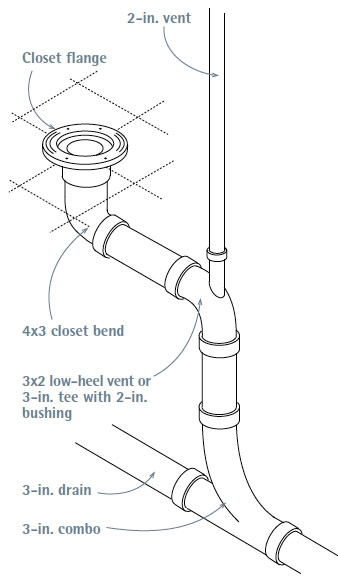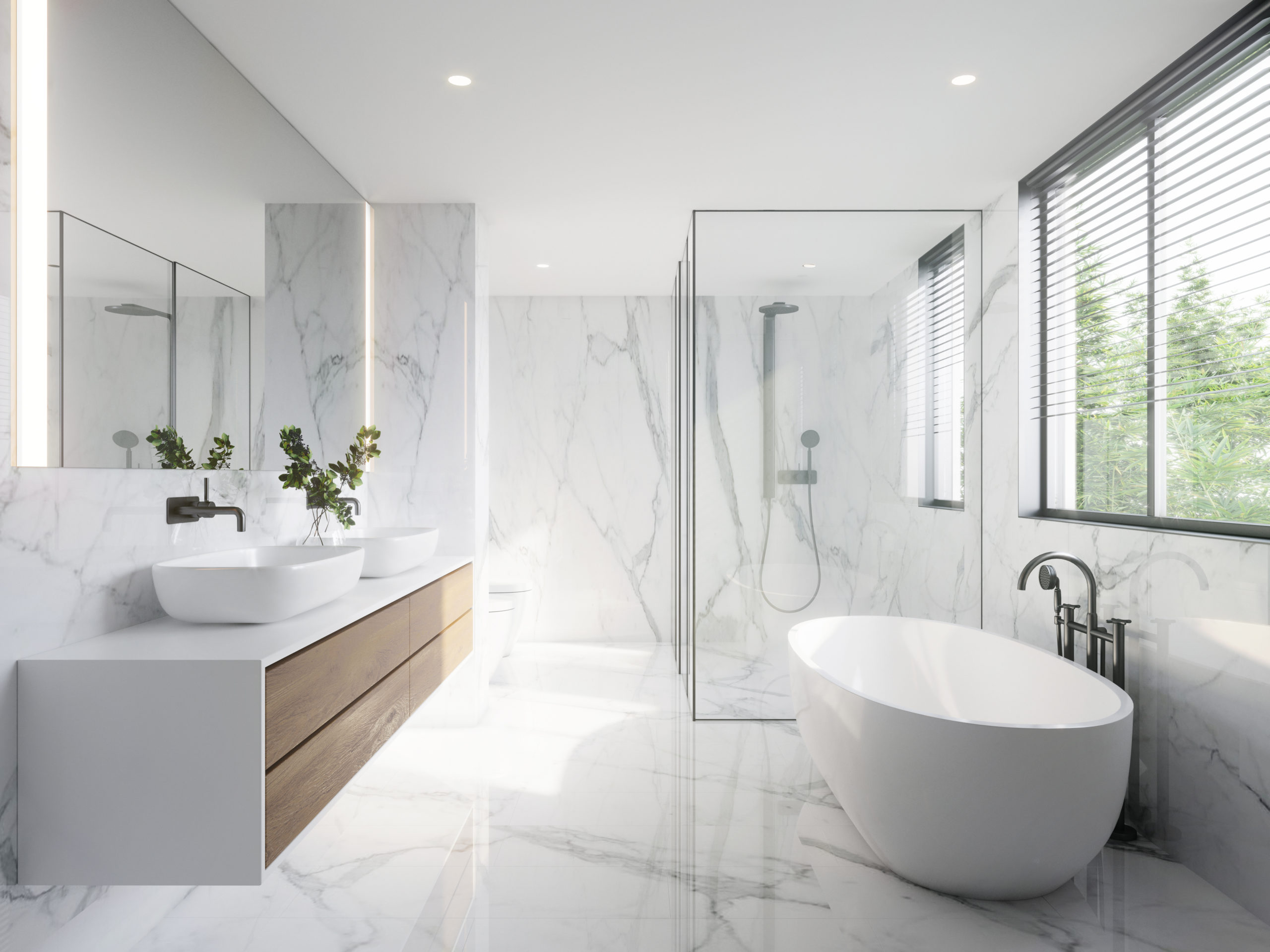The Significance of Ventilation in Home Plumbing Systems
The Significance of Ventilation in Home Plumbing Systems
Blog Article
What are your ideas regarding Essential Plumbing Vent Pipes: Understanding Their Role?

Appropriate air flow in pipes systems is frequently ignored, yet it is critical for preserving the functionality and safety of your home's pipes. Ventilation helps manage air pressure, avoid the accumulation of harmful gases, and ensure the efficient elimination of waste. In this overview, we will explore the relevance of correct pipes ventilation, how it works, and the benefits it gives your plumbing system.
Comprehending Air Flow in Pipes
Air flow in pipes refers to the network of pipes that enable air to stream with the drainage system. These vents serve multiple purposes, consisting of controling air pressure within the pipes, avoiding sewer gases from getting in the home, and helping in the smooth flow of wastewater.
Exactly How Air Flow Functions in Plumbing Systems
Atmospheric Pressure Policy
Appropriate air flow keeps balanced air pressure within the pipes system. When water moves through pipes, it displaces air. Without ample ventilation, this displacement can develop negative pressure, leading to reduce drains pipes or siphoning of water from traps, which can trigger unpleasant odors to permeate into the home.
Protecting Against Sewer Gas Accumulation
Among the most important features of plumbing vents is to prevent sewage system gases, such as methane and hydrogen sulfide, from collecting within the home. These gases can pose significant health threats and are highly flammable. Vent pipelines allow these gases to leave securely outside.
Helping in Waste Elimination
Ventilation helps in the reliable removal of wastewater by preventing airlocks in the drain system. When air can stream easily through the vents, it permits water and waste to stream efficiently through the pipes, minimizing the threat of clogs and back-ups.
Sorts Of Plumbing Vents
Main Stack Vent
The major pile vent, likewise called the vent pile, is the key vent in a plumbing system. It extends from the main drainpipe align through the roofing system, enabling gases to leave and fresh air to enter the system.
Branch Vent
Branch vents link to the primary pile vent and offer private fixtures, such as sinks, toilets, and showers. These vents guarantee that each fixture has ample ventilation to operate appropriately.
Air Admission Valve (AAV).
An Air Admission Valve (AAV) is a one-way valve that permits air to enter the pipes system without the requirement for a standard air vent pipeline expanding via the roof covering. AAVs are generally made use of in restorations or locations where setting up a standard air vent is unwise.
Signs of Poor Air Flow in Plumbing.
Slow Draining Fixtures.
If your sinks, bathtubs, or toilets are draining pipes slowly, maybe a sign of bad ventilation. Insufficient air circulation can create a vacuum impact, making it hard for water to drain correctly.
Gurgling Seems.
Gurgling noises originating from drains pipes are often an outcome of air being drawn through water traps due to adverse stress in the pipes. This is a clear indicator of not enough air flow.
Unpleasant Odors.
Drain smells inside your home are a red flag that your pipes system is not appropriately aerated. This could imply that sewage system gases are not being effectively aired vent outside, bring about possibly hazardous conditions.
Common Ventilation Mistakes.
Insufficient Vent Sizing.
Using undersized vent pipes can result in poor air flow and stress inequalities in the system. It's important to use vents that meet the specific requirements of your plumbing system.
Improper Vent Positioning.
Positioning vents also much from the components they offer can reduce their efficiency. Appropriate positioning ensures that air can flow freely and effectively with the system.
Disregarding Code Demands.
Building regulations supply certain guidelines for plumbing air flow. Overlooking these codes can cause a system that falls short to function correctly and might result in expensive repair services or health hazards.
Benefits of Proper Ventilation.
Enhanced System Performance.
Effectively aerated plumbing systems operate more successfully, with less obstructions, faster draining pipes, and less strain on the pipelines. This effectiveness extends the life-span of the pipes system.
Improved Air Top Quality.
By stopping drain gases from entering your home, appropriate ventilation contributes to better interior air quality, making your living atmosphere healthier and much more comfy.
Preventing Water Damages.
Appropriate ventilation helps prevent water from being siphoned out of catches, which can result in sewage system gases going into the home and causing water damage over time.
Actions to Ensure Appropriate Ventilation.
Consulting Plumbing Codes.
Always consult regional pipes codes when developing or customizing your pipes system. These codes supply the necessary guidelines for appropriate airing vent and guarantee your system fulfills safety and security standards.
Regular Evaluation and Upkeep.
Regular assessments can assist determine possible ventilation concerns prior to they end up being major troubles. Maintenance jobs, such as cleaning up vent pipes and looking for obstructions, are essential for keeping the system in good working order.
Expert Installation.
For new installments or significant adjustments, it's wise to work with an expert plumbing professional. They have the expertise to guarantee the ventilation system is properly designed and mounted according to code.
Verdict.
Appropriate air flow is a vital part of any type of pipes system, guaranteeing that it operates efficiently and safely. By recognizing the significance of air flow, identifying the signs of poor ventilation, and taking steps to keep your system, you can stop pricey issues and protect your home's air top quality.
4 Things You Should Know About Your Plumbing Vents
What Plumbing Vents Are
Also called a vent stack, a plumbing vent is a vertical pipe attached to your drain line that runs through your roof. The plumbing vent pipe, or plumbing air vent, removes gas and odors from your plumbing system and allows fresh air to enter the pipes, helping the water to flow out of the drain pipes.
What Plumbing Vents Do
Plumbing vents have two basic functions. One of which is to allow unpleasant smelling wastewater and sewer gasses to escape your plumbing system instead of entering your home. Plumbing vent pipes are typically located on roofs, away from windows, to ensure the fumes exit the home completely.
The other function of the plumbing vent is to move fresh air into your plumbing system. This helps move water through every plumbing fixture in your house, like toilets and sink drains. Think of the way in which you need to let a little air into the bottle as you pour soda in order to make the drink flow smoothly.
Different Types of Plumbing Vents
True vent: This is the most common vent option. In simplest terms, a true vent is a vertical pipe attached to your drain line that exits through the roof. They often function as the main vent that other fixtures can connect to. Re-vent pipe or auxiliary vent: Attached to the drain line near specific plumbing fixtures, re-vent pipes run up and over to connect to the main vent. Common vent: Two plumbing fixtures installed on opposite sides of a wall are typically tied into the vent stack using something known as a sanitary cross. Wet vent: This venting option operates as a drain pipe and a vent at the same time. Wet vent drainage systems drain water from one fixture while venting the air from another. Although they’ve been used for over 100 years, wet vent systems have only recently been added to the plumbing code in many areas. If you’re planning on installing one in a bathroom remodel, make sure you check your local code prior to construction. Loop vent: For free-standing fixtures like kitchen island sinks, loop vents are ideal. These vent pipes run under the floor, rise from the P-trap, and create a loop inside the cabinet sink. Air admittance valve: An AAV is a one-way mechanical valve typically installed at the site of the plumbing fixture. AAVs allow venting to occur without having to tie into a larger venting system. They’re ideal for venting fixtures where you aren’t able to easily connect to an existing vent system. Common Plumbing Vent Issues
Although vent pipes typically don’t have water flowing through them, they’re still subject to many typical plumbing issues. For example, clogs are one of the most common problems associated with sewer vent pipes. If your vent pipe gets clogged, all of your plumbing fixtures tied into the vent stack will be affected.
A sink with a slow drain that bubbles and gurgles or a strong sewage smell around your toilet are both indicators that your toilet vent pipe is clogged. Because most vent pipes exit through the roof, old leaves, twigs or even a bird’s nest could be clogging the pipe.
Clogs in your vent pipe system cause a buildup of negative pressure, meaning that water won’t be able to flow out of your home very well. It’s similar to putting your finger over the opening of a straw to trap water inside. When you remove your finger, the water is able to flow out of the straw.
If you suspect you have any blockage in your vent, make sure you have a professional come examine the situation. Left unchecked, a blocked air vent can lead to other costly repairs, like leaks and sediment buildup.
Under Pressure
Pipe vents are essential aspects of a home’s plumbing system. Owning a home means learning about all sorts of things you never put much thought into before. But by understanding as much as you can about the important systems of your home, you can keep those budgets intact and those anxiety levels low.
https://www.homeserve.com/en-us/blog/home-improvement/plumbing-vents/

I stumbled upon that post on Why Plumbing Air Vents Are Important while doing a search on the web. Loved our entry? Please share it. Help someone else check it out. Thank you so much for your time spent reading it.
Book A Service Report this page